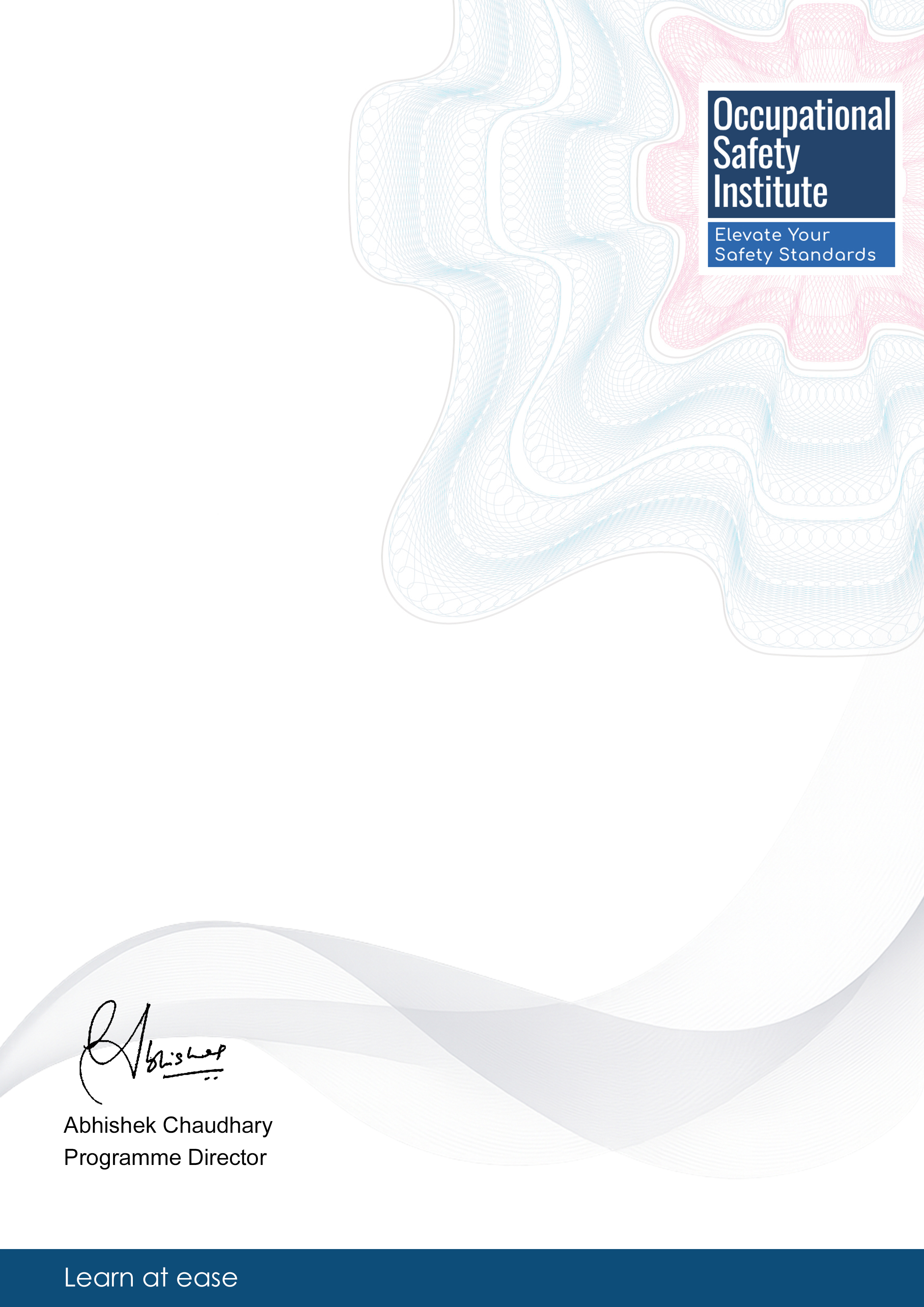Module 1: Introduction to Hazard Identification
Explore the fundamentals of hazard identification, importance in workplace safety, and common types of workplace hazards.
This course provides a deep understanding of effective hazard identification in workplace environments. Ideal for health and safety professionals, supervisors, and managers. Unique in its practical approach, it equips participants with essential skills to create safer work environments and reduce risks. Key benefits include enhanced safety awareness, risk reduction strategies, and improved hazard assessment proficiency.
4.4/5
|96 reviews
|418 students enrolled
Comprehensive, industry-recognized certification that enhances your professional credentials
Self-paced online learning with 24/7 access to course materials for maximum flexibility
Practical knowledge and skills that can be immediately applied in your workplace
Explore the fundamentals of hazard identification, importance in workplace safety, and common types of workplace hazards.
Learn how to recognize potential hazards, assess their impact, and prioritize risk control measures.
Understand the hierarchy of hazard controls and strategies for implementing effective control measures.
Develop safety protocols based on hazard assessments and enhance emergency response procedures.
This programme includes comprehensive study materials designed to support your learning journey and offers maximum flexibility, allowing you to study at your own pace and at a time that suits you best.
You will have access to online podcasts with expert audio commentary.
In addition, you'll benefit from student support via automatic live chat.
Assessments for the programme are conducted online through multiple-choice questions that are carefully designed to evaluate your understanding of the course content.
These assessments are time-bound, encouraging learners to think critically and manage their time effectively while demonstrating their knowledge in a structured and efficient manner.
The field of health and safety offers diverse career prospects with growing demand for professionals skilled in hazard identification and risk management.
Career progression in health and safety includes roles such as safety manager, risk assessor, and compliance officer. Professional development opportunities include certifications in occupational health and safety.
Responsible for overseeing safety protocols and ensuring compliance with regulations.
Conducts risk assessments to identify potential hazards and recommends control measures.
Health and safety professionals benefit from networking opportunities, professional certifications, advanced education paths such as a Diploma in Occupational Health and Safety, and industry recognition for their expertise.
Professional Development Specialist
"This Effective Hazard Identification in Workplace Environments course provided me with practical skills that I could immediately apply in my work. Highly recommended for anyone looking to advance their expertise."
Training Coordinator
"The comprehensive approach of this Effective Hazard Identification in Workplace Environments course exceeded my expectations. The content was well-structured and relevant to current industry needs."
Department Manager
"I found the Effective Hazard Identification in Workplace Environments course to be incredibly valuable for my professional development. The practical examples made complex concepts easy to understand."
Project Coordinator
"This Effective Hazard Identification in Workplace Environments course has enhanced my skills significantly. The flexible online format allowed me to study at my own pace while maintaining my work commitments."
Upon successful completion of this course, you will receive a certificate similar to the one shown below:

Postgraduate Certificate Effective Hazard Identification in Workplace Environments
is awarded to
Student Name
Awarded: December 2025
Blockchain ID: 111111111111-eeeeee-2ddddddd-00000
No specific prior qualifications are required. However, basic literacy and numeracy skills are essential for successful completion of the course.
The course is self-paced and flexible. Most learners complete it within 1 to 2 months by dedicating 4 to 6 hours per week.
This course is not accredited by a recognised awarding body and is not regulated by an official institution. It is designed for personal and professional development and is not intended to replace or serve as an equivalent to a formal degree or diploma.
This fully online programme includes comprehensive study materials and a range of support options to enhance your learning experience: - Online quizzes (multiple choice questions) - Audio podcasts (expert commentary) - Live student support via chat The course offers maximum flexibility, allowing you to study at your own pace, on your own schedule.
Yes, the course is delivered entirely online with 24/7 access to learning materials. You can study at your convenience from any device with an internet connection.
Effective Communication for Health and Safety in the Workplace Seminar
This seminar focuses on enhancing workplace safety by impro…
Enhancing Workplace Safety Through Emotional Intelligence Training
This course focuses on enhancing workplace safety through E…
Effective Fire Safety Training for Workplace Safety
This course provides in-depth training on effective fire sa…
Advanced Techniques in Workplace Training for Health and Safety
Our course on Advanced Techniques in Workplace Training for…
Disclaimer: This certificate is not intended to replace or serve as an equivalent to obtaining a formal degree or diploma. This programme is structured for professional enrichment and is offered independently of any formal accreditation framework.